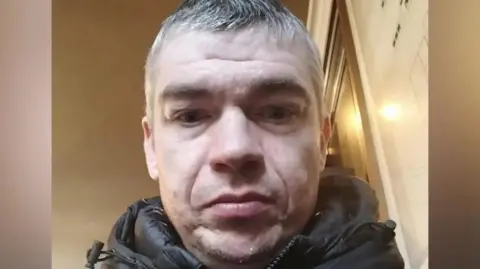In a harrowing incident that has drawn significant media attention, a 38-year-old man suspected of attacking two women with a crossbow in Leeds tragically died from a self-inflicted gunshot wound, as reported in an ongoing inquest. The deceased, identified as Owen Lawrence, passed away on April 28, 2025, at Leeds General Infirmary, just two days after the violent attack in Headingley, a vibrant area known for its nightlife and the popular “Otley Run” pub crawl frequented by students.
The inquest into Lawrence’s death commenced at the Wakefield Coroner’s Court and revealed several key details about his life and the circumstances surrounding the event. Lawrence, originally named Owen Lawrence Eames, had undergone a name change by deed poll. Living on Wood Lane in Headingley, he was noted to have been registered disabled at the time of his passing.
During the inquest, coroner Oliver Longstaff confirmed that Lawrence’s injuries were inflicted by an airgun, although the specifics regarding the exact circumstances of the shooting have yet to be fully investigated. He stated, “The inquiry has attracted a considerable amount of media and public interest,” and thus urged those present and the general public to refrain from speculation until the inquest could proceed further. The hearing was adjourned to allow law enforcement and investigative bodies adequate time to complete their examinations.
The incident that led to Lawrence’s dire situation unfolded on April 26, 2025, when he reportedly attacked two women aged 19 and 31 during a busy night in Headingley. The area is known for its bustling atmosphere, particularly during the Otley Run, a pub crawl that attracts numerous participants and is characterized by visits to around 19 pubs between Headingley and the city center of Leeds. Tragically, the younger victim required emergency surgery due to the injuries sustained but was, fortunately, discharged from the hospital subsequently.
This incident has sparked considerable concern over safety guidelines during social activities such as the Otley Run, with many calling for stricter control over the sale and possession of crossbows, which have become a focal point of the discussion in the wake of the attack. The overarching response highlights a growing unease regarding public safety and the implications of weapon accessibility in community spaces.
Additionally, it is essential to acknowledge the ongoing discussions about social violence and public safety, particularly in settings where large groups congregate. As students and residents often fill the streets during pub crawls, the potential for violent incidents becomes an increasing concern not only for law enforcement agencies but also for the local communities that wish to enjoy their social spaces without fear.
As the inquest moves forward, it is expected to delve deeper into the psychological and societal factors contributing to such acts of violence, alongside evaluating preventive measures to ensure the safety of public venues. This tragic case, involving both the victims and the perpetrator, serves as a complex reminder of the underlying issues related to mental health, impulse control, and community safety that need to be addressed.
In summary, Owen Lawrence’s death raises pivotal questions about responsibility, community safety, and the manipulation of weapons in social settings. As the probe continues, it remains crucial for authorities and community members alike to discuss ways to nurture safer environments that allow individuals, particularly young adults, to engage socially without fear of violence or retribution.



